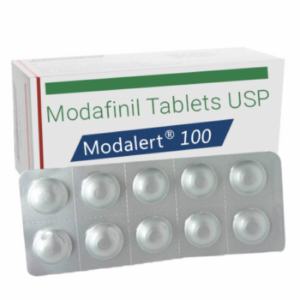
A Complete Guide for Australian Truck Drivers on Managing Fatigue with Modafinil for Long Haul Trips
Long haul trucking is a demanding job that requires focus, endurance, and the ability to navigate long hours on the road safely. Fatigue is one of the biggest challenges for truck drivers, especially during those long stretches of highway where both mind and body can grow weary.
In this guide, we’ll dive into everything Australian truck drivers need to know about managing fatigue, specifically with the help of Modafinil, a wakefulness-promoting agent that’s gaining popularity in the industry.
Let’s start with understanding why fatigue is such a crucial issue in trucking.
Understanding Fatigue in Long Haul Trucking
Fatigue affects everyone differently, but it tends to hit hardest during long stretches of uninterrupted driving. Physical exhaustion, mental fog, and reduced alertness are all signs that fatigue is setting in. For long haul truckers, managing this fatigue is challenging because it can sneak up gradually over hours. Understanding how and when fatigue strikes is key to recognizing and addressing it before it becomes a hazard.
Causes and Risks of Fatigue for Truck Drivers
Several factors contribute to fatigue for truck drivers:
- Long Hours on the Road – Sitting for extended periods leads to physical and mental fatigue.
- Irregular Sleep Patterns – Long haul drivers often struggle with non-traditional hours, which disrupts their sleep cycle.
- Monotonous Driving Conditions – The long stretches of highway can create a “highway hypnosis” effect, reducing alertness.
If left unmanaged, fatigue can increase the risk of accidents, impact overall job performance, and affect drivers’ health. Recognizing the causes can help drivers implement strategies to counteract them.
Importance of Fatigue Management for Long Haul Drivers
- Enhances Alertness and Responsiveness: Managing fatigue helps drivers stay sharp and ready to respond to any unexpected events on the road, ensuring quicker reaction times and better decision-making.
- Reduces Accident Risks: A well-rested driver is less likely to make mistakes or lose focus, significantly lowering the chance of accidents and enhancing overall road safety.
- Improves Adaptability to Road and Weather Conditions: Fatigue management helps drivers maintain the mental clarity needed to handle changing weather, road hazards, and other unpredictable conditions more effectively.
- Promotes Safety for All Road Users: By managing fatigue, drivers not only protect themselves but also contribute to a safer environment for everyone on the road, including other vehicles and pedestrians.
- Supports Healthier Driving Habits: Regular breaks, proper sleep, hydration, and, in some cases, safe use of tools like Modafinil can help drivers maintain a balanced approach to fatigue, making long hauls more sustainable and safer.
Effects of Fatigue on Driving Performance and Safety
When fatigue kicks in, reaction times slow, judgment becomes clouded, and it’s harder to stay focused. A fatigued driver may start drifting lanes, missing turns, or fail to notice road signs. Long-term fatigue can also contribute to chronic health issues, adding stress to an already demanding job. In short, fatigue directly impacts a driver’s ability to operate a vehicle safely, making effective management essential for road safety.
What is Modafinil?
Modafinil is a prescription medication designed to promote wakefulness. Originally developed for treating sleep disorders like narcolepsy, Modafinil has gained traction as a tool to help maintain alertness and combat fatigue. It works by stimulating certain brain areas related to alertness and attention, without causing the jittery effects often associated with stimulants like caffeine. Modafinil, when used responsibly, can help drivers stay sharp during long hours on the road.
Benefits of Modafinil for Fatigue Management in Long Haul Driving
For long haul drivers, Modafinil offers several potential benefits:
- Prolonged Alertness – Modafinil helps sustain focus over extended periods, reducing the risk of “zoning out.”
- Reduced Drowsiness – It minimizes the “sleepiness” feeling, helping drivers stay alert even in low-stimulus situations.
- Improved Cognitive Function – Modafinil may enhance reaction times and decision-making, which are essential for safe driving.
Modafinil and the Australian Trucking Industry
In Australia, Modafinil is a prescription-only drug, meaning drivers must obtain it legally through a healthcare provider. The trucking industry in Australia is increasingly acknowledging Modafinil as a tool for responsible fatigue management. However, drivers must adhere to guidelines and consult healthcare providers to use Modafinil safely.
Recommended Dosage and Timing for Long Haul Drivers
- MODALERT 100 MG: This is a lower dose of Modafinil that can provide a subtle yet effective boost in alertness. Ideal for drivers who may be new to Modafinil, this dose helps maintain wakefulness without overstimulation. Taking MODALERT 100 MG in the morning or at the beginning of a shift allows drivers to experience a steady enhancement in focus and alertness throughout the day.
- MODVIGIL 200 MG: For those who may require a stronger level of support, MODVIGIL 200 MG offers a higher dose that can help sustain prolonged alertness, ideal for particularly challenging or extended shifts. As with all doses of Modafinil, it’s best taken in the early hours to prevent interference with nighttime sleep.
Note: Always consult a healthcare provider to determine the most suitable dosage for your individual needs and avoid taking Modafinil close to bedtime, as it can disrupt sleep patterns.
How Modafinil Impacts Sleep and Recovery
Modafinil is designed to promote wakefulness, but it’s not a replacement for sleep. Drivers using Modafinil should prioritize getting quality rest, as sleep remains the only true solution for restoring energy. Using Modafinil too frequently or close to sleep can interfere with natural rest cycles, leading to longer-term fatigue. Maintaining a balance between medication and good sleep practices is crucial for lasting alertness and health.
Tips for Monitoring Side Effects and Individual Tolerance
- Start with a Low Dose: Begin with the lowest recommended dose to observe how your body reacts. Gradually increase only if needed and after consulting a healthcare provider.
- Monitor for Common Side Effects: Watch for headaches, nausea, or mild anxiety, especially in the first few days. Mild side effects can sometimes subside as your body adjusts, but it’s important to track how you feel.
- Stay Hydrated: Modafinil can sometimes lead to dehydration, which may exacerbate headaches. Drinking plenty of water throughout the day can help minimize this risk.
- Avoid Stimulants: Combining Modafinil with caffeine or other stimulants can increase jitteriness or anxiety. Stick to non-caffeinated drinks to keep side effects at a minimum.
- Consult a Healthcare Provider if Side Effects Persist: If any side effects continue or impact daily activities, consult a healthcare provider to adjust the dosage or explore alternatives. Always listen to your body and adjust as needed to avoid discomfort.
Wrapping Up,
In conclusion, effective fatigue management is vital for long-haul truck driver safety. Modafinil, available as Modvigil and Modalert, can aid wakefulness but should be used under medical guidance. Pairing Modafinil with regular breaks, a balanced diet, and good sleep hygiene maximizes alertness. For more on Modafinil options in Australia, visit Modafinil 4 Australia.






